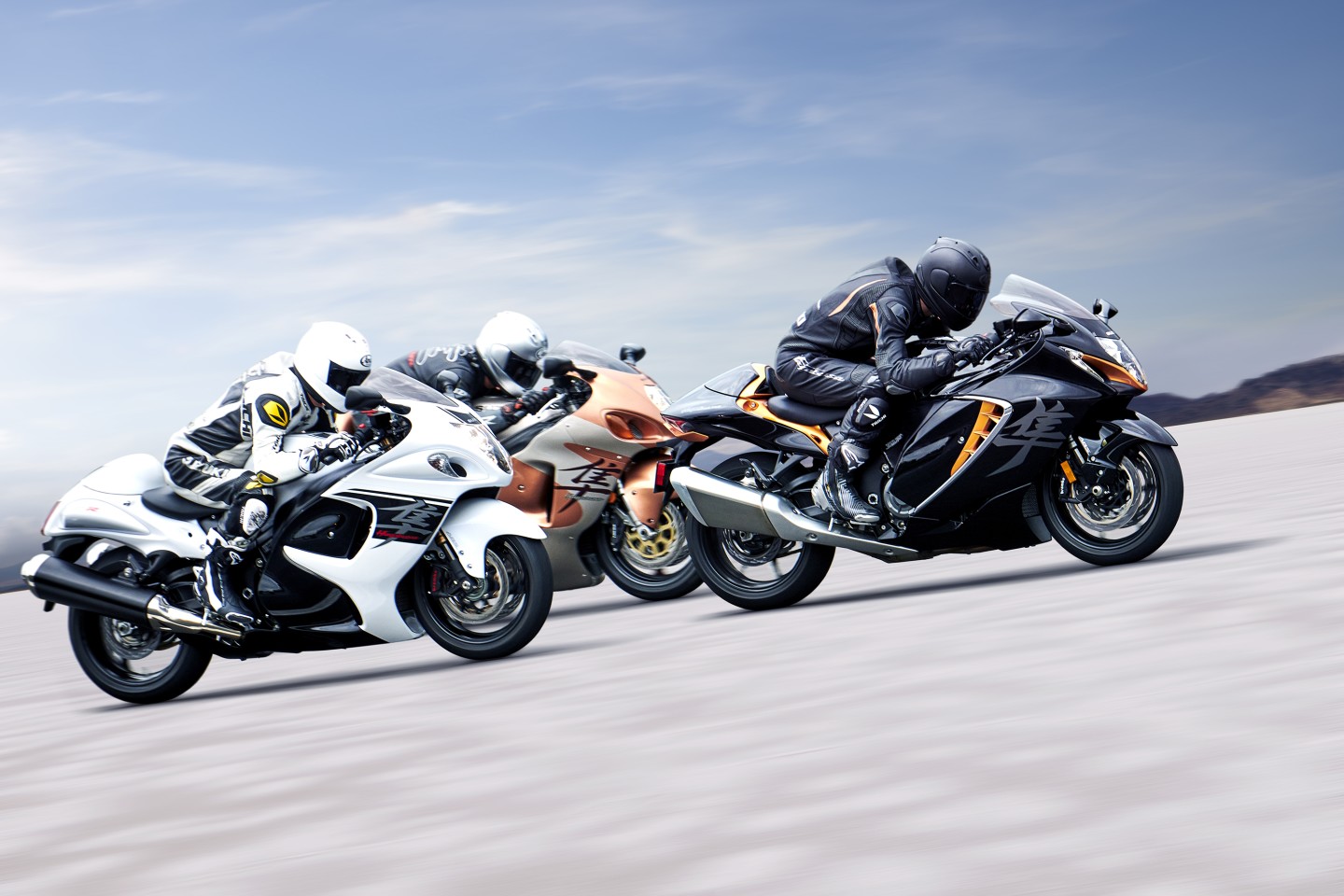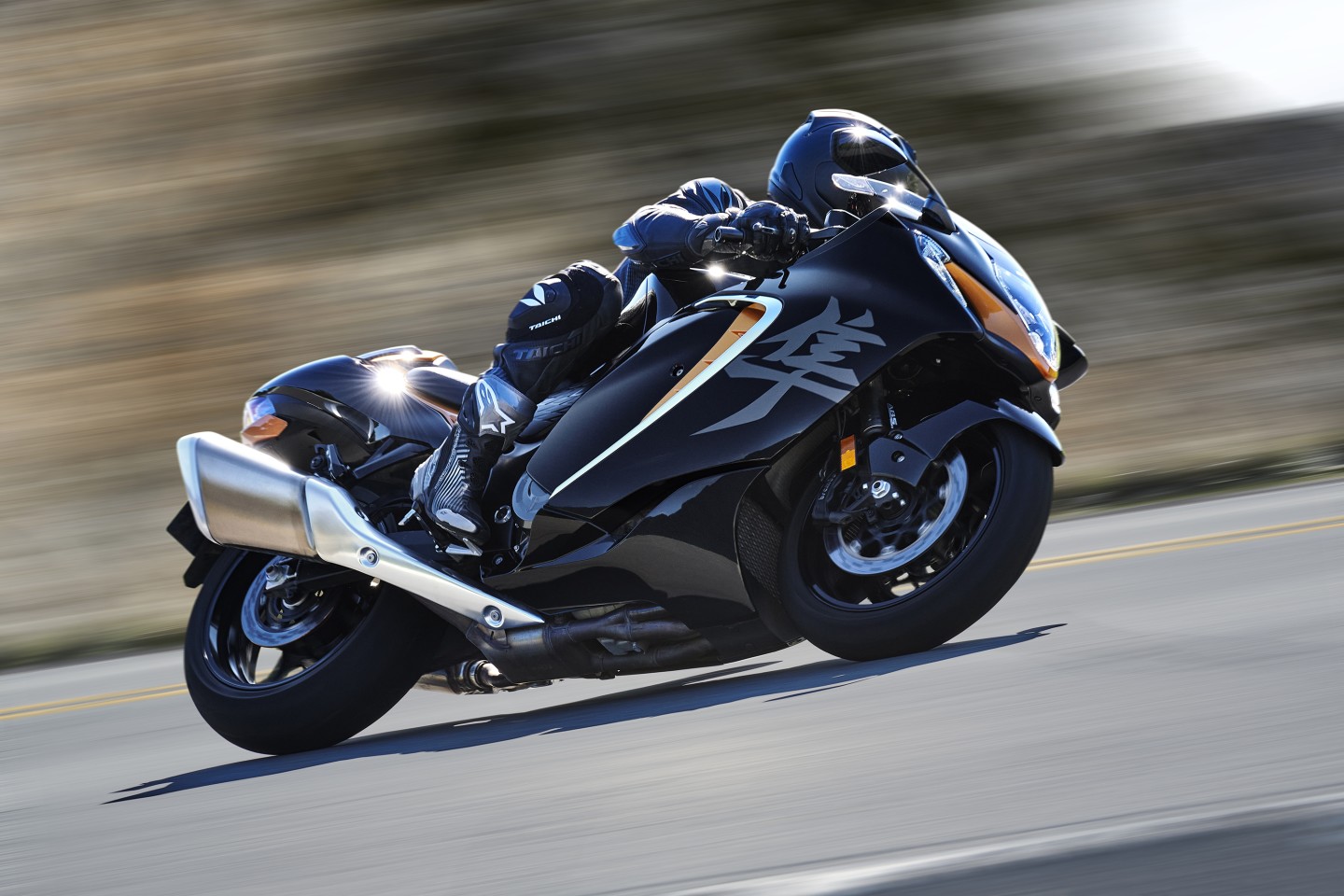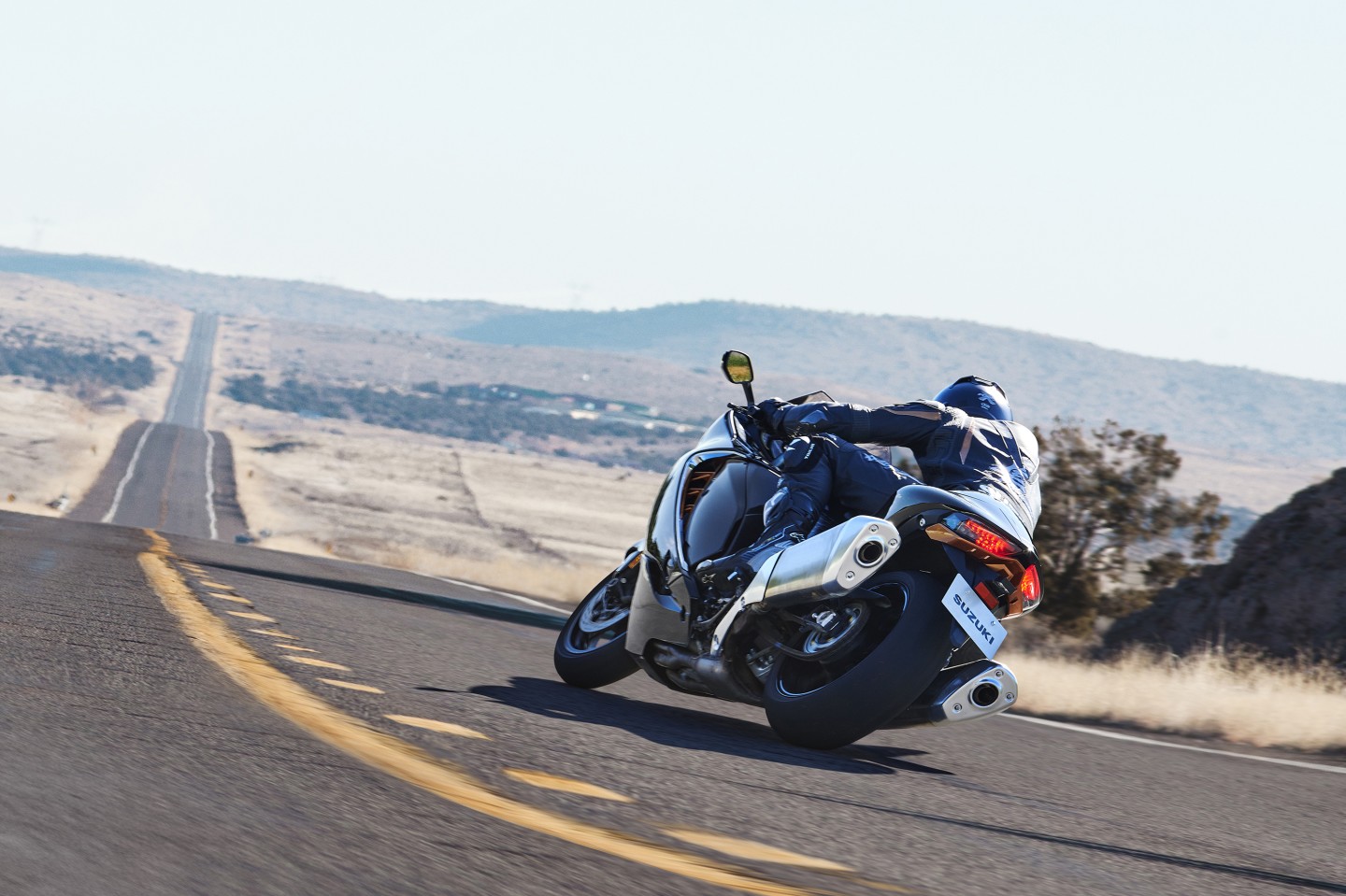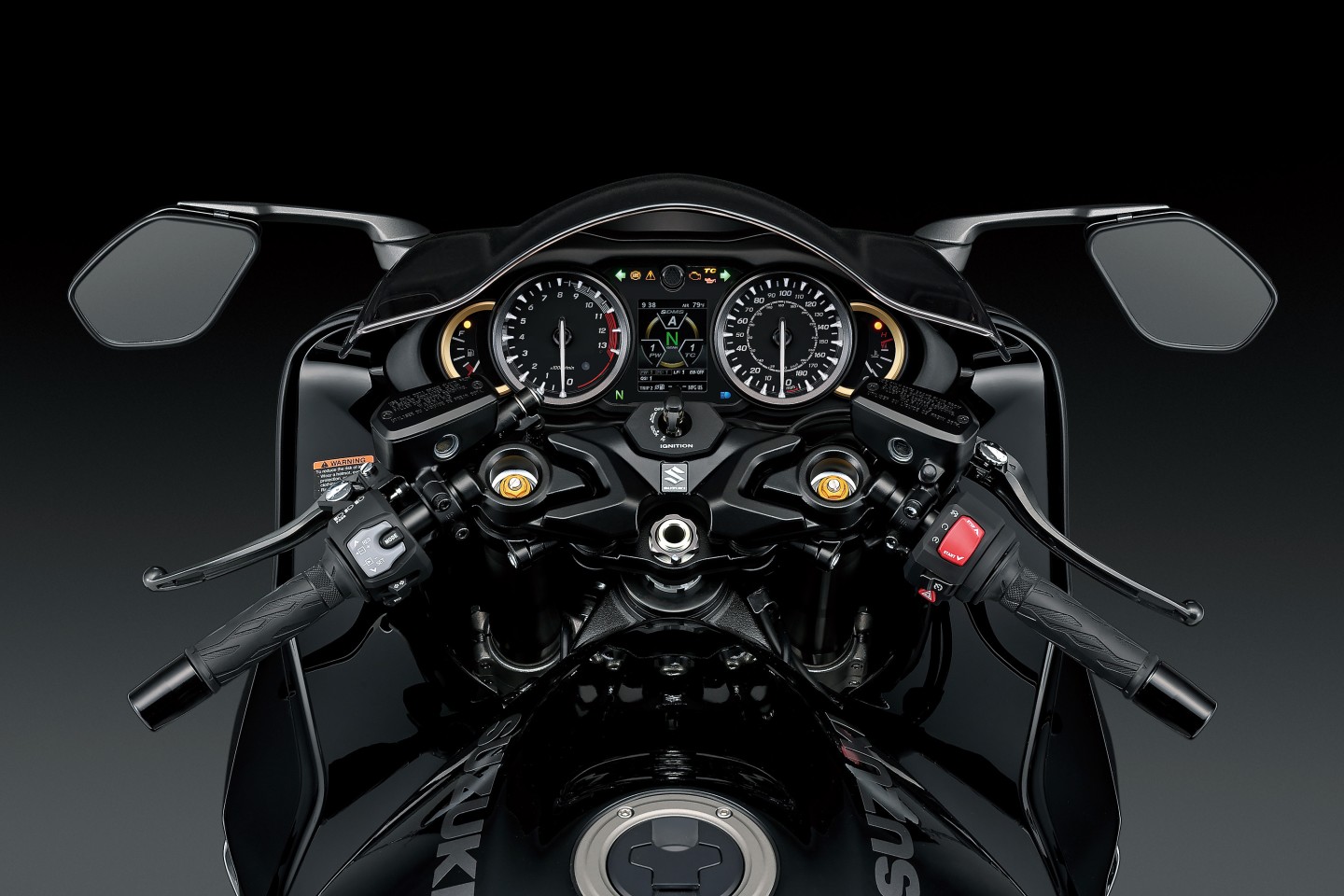If the name Hayabusa doesn’t automatically spark a fireworks show of opposing emotions in you, let me bring you up to speed. Back before the turn of the century, all the way back in 1996, Honda released the fastest production motorcycle the world had ever seen: the CBR1100XX Super Blackbird. Hitting top speeds as high as 178.5 mph (287.3 km/h), the Blackbird was named for one of the world’s fastest predators.
But it wasn’t the fastest. One of the Blackbird’s few superiors in the sky is the Peregrine falcon, known as the Hayabusa in Japan and the world’s fastest bird. And that’s what Suzuki called the GSX-1300R when it launched in 1999 and instantly claimed a seat in the pantheon of the world’s most extreme motorcycles.
It looked bulbous, chubby and bizarre, earning it the nickname “eye abuser,” but those Botticellian aerodynamic curves were function over form. The single-minded function was pure velocity, and powered by the largest engine ever seen in a production sportsbike to that time, the original ‘Busa left riders and reviewers stunned with an out-of-the-box top speed somewhere around 194 mph (312 km/h). Outrageous.
The Blackbird instantly started looking like a nice little touring bike. True maniacs were riding Hayabusas. And even though the Japanese manufacturers reportedly entered into a famous “gentleman’s agreement” to electronically limit all bikes after 1999 to 299 km/h (186 mph) – thus making them totally safe, right? – the ‘Busa kept its reputation as the speed freak’s bike of choice by proving itself vastly overengineered. You could turbo these babies up over 500 horsepower with the right tuner in charge.

Suzuki
And it wasn’t just the fastest production bike of the 20th century; it handled well, too, by all accounts, and despite its stretched-out stance it was surprisingly comfortable. You could take it across the country on tour, or take it to a drag strip with the mirrors still on and run a sub-10 second quarter mile. Its prominent logo – a Japanese kanji character for the name – was seared into bikers’ minds, and custom builders, understanding the ‘Busa’s cachet, took to it with considerable fervor. It’s a truly iconic motorcycle, and unrestricted 1999 models still command good money on the used market.
After a fairly minor model update in 2007, Suzuki has been threatening a third-gen Hayabusa for what seems like forever now, sparking all sorts of fevered speculation, and it’s finally pulled the trigger with a 2022 model released on Friday.
If you were afraid the new model wouldn’t look like a Hayabusa, well, fear not. There are some new flashes of color highlighting some new vents around the sides of the engine, around the slightly more angular tail section, and beneath the headlight in a new nosecone that takes some design cues from late-model GSX-R sportsbikes. But the elongated silhouette and the hulking twin exhausts are unmistakeable, and that prominent kanji character still slashes across the side fairings.

Suzuki
So what are we looking at under the skin? Could it be a turbo? An inline six? Something to knock Kawasaki’s bonkers, supercharged H2 off its perch? Erm, no. Suzuki says it tested all such ideas in prototypes over the last decade, but ended up coming back to an inline four displacing 1,340cc, about a shot glass more than the old models at 1,299cc. All the better, apparently, to preserve the spirit of the legend, or something.
But let’s not get too disappointed; this is an all-new, ground-up engine overhaul. Okay then, what about the power? Dazzle us, guys! “The new Hayabusa’s power output,” says a test rider in the launch video, “is about the same as on its predecessor.” I’m sorry, what? “The new Hayabusa performs comparatively better at low speed, and marginally outdoes the previous generation when opening the throttle from low speed in sixth gear.” So … a very modest overhaul keeping peak outputs around 187 hp, but adding a little extra midrange poke for street riding.
Well, it’s certainly lost its spec-sheet shock and awe factor, but this is still a very fast bike. And the further we look into this third-generation model, the more, dare we say, sensible an update it looks like. An overhaul was necessary to keep the ‘Busa in the good book with Euro-5 emissions regulations, and Suzuki has taken the opportunity to upgrade the bike with a full suite of electronics.

Suzuki
So despite the familiar-looking dash with its big analog needles, you’re now looking at a fully ride-by-wire machine with a six-axis IMU and what’s called a “Suzuki Intelligent Ride System” between the rider’s inputs and the road. Traction control. Wheelie control. Launch control. Engine brake control. Combined cornering ABS braking. A bidirectional quickshifter. And for the practically-minded street rider, there’s cruise control, hill hold control, multiple power modes, and an active speed limiter that lets you nominate a speed past which the bike will only accelerate if you give it a bit of a handful.
The brakes are top-shelf Brembo Stylemas. The suspension is adjustable, from KYB, but not active or electronic. The weight is still a lot more than something racy: 582 lb (264 kg) fully fueled. And while this should be a much friendlier beast to ride with all those computers looking after you, the price is downright standoffish, bordering on rude: US$18,599.

Suzuki
This will be an excellent sport-touring motorcycle. It’ll be much better on the road where these beasts spend most of their time than the old ‘Busas. In my opinion, it’s better looking, and although it’s speed limited it remains a ferociously fast bike for highly experienced riders.
But this update makes it clear: the word Hayabusa doesn’t mean what it did back when we were partying like it was 1999. Suzuki has no interest in challenging the H2 for outright power, speed and road-registered insanity. The new Hayabusa is a big, powerful, smart and daily rideable hypertourer that’s more than fast enough for you or I to terrify ourselves all the way to heaven on, but don’t mistake it for the world’s fastest motorcycle. Those days are long gone.
Enjoy a detailed launch video below.
Suzuki new model reveal – 5 Feb 2021 – 0700 GMT
Source: Suzuki
Source of Article